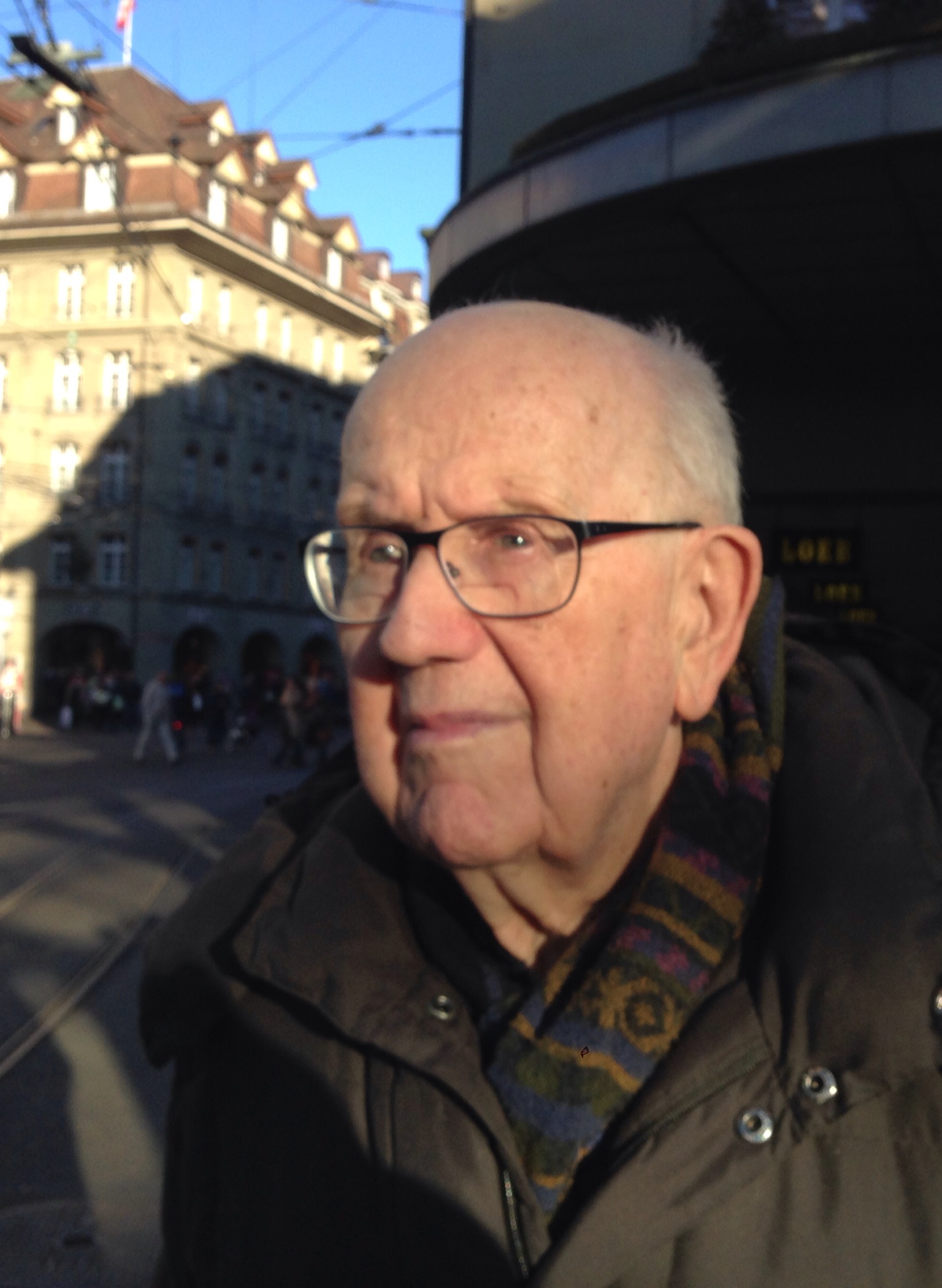advertisement


In Memoriam
Franz Werner Fankhauser
The ophthalmological community has lost one of the most important ‘giants’ of the last century, Franz Fankhauser. Modern glaucoma management was initiated by him with his research and interventions in the field of automated perimetry and laser.
Franz Werner Fankhauser was born on the 7th September 1924 in Thun (Switzerland) and passed away on the 27th of April 2020 in Berne.
Franz Fankhauser started his training in 1954 at the University Eye Clinic in Berne, headed by Hans Goldmann, the inventor of manual Goldmann Perimetry in 1946. Under his mentorship Fankhauser completed his residency in ophthalmology in 1958. To elaborate his surgical skills, he went for two years to the Department of Ophthalmology at the Medical College in Ludhiana, in the Indian state of Punjab. At that time already, clinical ophthalmology was very relevant to him as well.
With the support of Hans Goldmann (intellectual) and the ‘Swiss Grant’ of the National Institute of Health (financial) Fankhauser worked after his stay in India as a research fellow at the Department of Ophthalmology, Washington University, St. Louis, led by Bernhard Becker. At this time, he was supported by his wife Verena, working there as well, as a technician. Coming back to Berne, Fankhauser worked again with and for Goldmann. Despite, or more likely because of many intense and controversial discussions with Goldmann, Fankhauser was able to develop the first automated perimeter, the Octopus 201, with the physicist Jürg Spahr and the support of Interzeag (later Haag-Streit) in 1974. One of the essential benefits compared to other perimetry systems was the target to evaluate the visual field by determination of the differential light sensitivity threshold. Another benefit was the Octopus Fixation Control, which automatically eliminates fixation loss from the visual field testing.
But Fankhauser was not only focused on visual field testing and diagnostics. By using his (and Walter Lotmar’s) new optical concept of 60-diopter three-mirror contact lens photocoagulation (and observation) a significant progress was achieved compared to the previous direct ophthalmoscope using photocoagulation with Xenon lamp, developed by Meyer-Schwickerath. Later on, various laser systems where used (Ruby, Argon, and finally the Nd:Yag laser by LASAG Medical Company). Many different applications especially for the Q-switched Nd:YAG laser were developed, iris, chamber angle, vitreous, posterior capsule, and cyclodestructive procedures. Of course these many different laser applications resulted in the development of many new contact lenses as well.
Because of the fact that my father was a well-connected ophthalmologist, I had the opportunity to meet his famous colleagues from childhood on in our house or other places. For example, when visiting Goldmann in the early 1970s, in his wonderful house above the Lago Maggiore, I did not realize what genius I met.
Just after finishing my study in medicine in the late 80s, I was sent as a young ‘doctor’ by my father to his friend Franz in Berne for a few weeks. There I stayed at the apartment of Franz Fankhauser in the old city center. I never felt so ‘incapable’ as in those days and during late evening’s discussions with Franz. Whether it was about physics, mathematics or medicine, I recognized that the title of a ‘doctor’ does not mean too much. But Franz never pointed out my ignorance, instead he was happy to carry me through the challenges in medicine and research with his encyclopedic knowledge and gentle character.
Franz incited me to glaucoma in the Eye Clinic Lindenhof-Hospital and under the famous contemporary art collection in his apartment, together with his second wife Sylwia Kwasniewska (an excellent scientist and supporter of Franz). He installed in me, that there is so much to do in this exiting field in diagnosis and therapy and even more: the unknown fundamentals of this disease, that I knew from that time on, this was going to be my medical future.
Franz Fankhauser, a scientist, who was always looking behind the limits, had a great skill to detect, inspire and promote numerous scientists from other fields, such as engineers, physicists, mathematicians, opticians, micro-morphologists, anatomists and others.
Among the many awards and prizes Franz Fankhauser received I just want to mention: 1982 Marcel-Benoist-Preis, 1984 Dr. med. h.c. Basel, 1988 Helmholtz-medal, 1994 Karl-Wesselymedal, 1996 v. Graefe medal. He has published more than 300 scientific papers, many of them together with his wife Sylwia.
In 2003 Josef Flammer created the Fankhauser medal and lecture, awarded by the University of Basel.
Franz Fankhauser is survived by his wife Sylwia and his son Franz Fankhauser, an ophthalmologist as well.
Franz, we will miss you.
Tony Hommer, Vienna, Austria
(Written with the support of Franz Fankhauser Jr. and Baldur Gloor)
Literature
Franz Fankhauser: The Father of the Automated Perimeter Balder P. Gloor, Survey of Ophthalmology, 2009; 54-3: 417-425 https://doi.org/10.1016/j.survophthal.2009.02.007.

